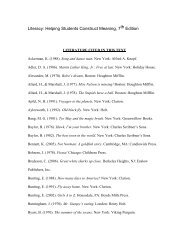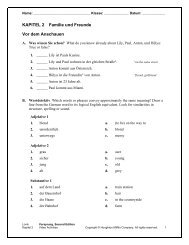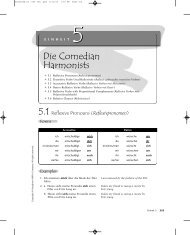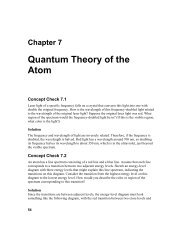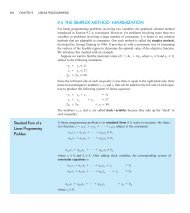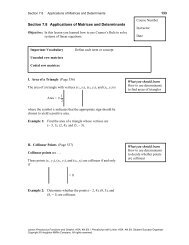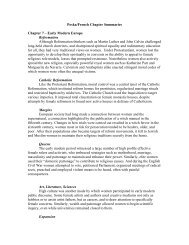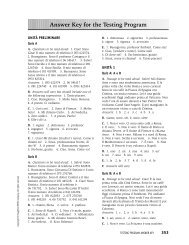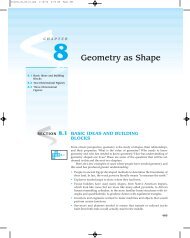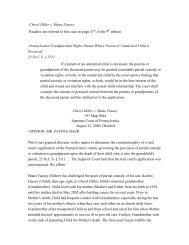SECTION 8.2 TWO-DIMENSIONAL FIGURES - Cengage Learning
SECTION 8.2 TWO-DIMENSIONAL FIGURES - Cengage Learning
SECTION 8.2 TWO-DIMENSIONAL FIGURES - Cengage Learning
Create successful ePaper yourself
Turn your PDF publications into a flip-book with our unique Google optimized e-Paper software.
304150_ch_08_02.qxd 1/16/04 6:06 AM Page 519<br />
FIGURE 8.60<br />
■ Mathematics ■<br />
Did you notice the geometric<br />
balance in Figure 8.61, which<br />
represents the Cartesian<br />
product of the two sets of<br />
triangles?<br />
CLASSROOM CONNECTION<br />
Some students have told me<br />
that this investigation is huge<br />
for them, because they had<br />
never thought about<br />
organization and classification<br />
with respect to triangles.<br />
Triangles just were!<br />
The key to this comes from looking at the triangles from a different perspective:<br />
Every right triangle has exactly two acute angles, and every obtuse triangle<br />
has exactly two acute angles; thus a triangle having more than two acute<br />
angles will be a different kind of triangle. This perspective is represented in<br />
Table 8.3. Does it help you to understand better the three definitions given above?<br />
TABLE 8.3<br />
STRATEGY 3: Consider angles and sides<br />
This naming of triangles goes even further. What name would you give to the<br />
triangle in Figure 8.60?<br />
This triangle is both a right triangle and an isosceles triangle, and thus it is<br />
called a right isosceles triangle or an isosceles right triangle. How many possible<br />
combinations are there, using both classification systems? Work on this<br />
before reading on. . . .<br />
There are many strategies for answering this question. First of all, we find<br />
that there are nine possible combinations (see Figure 8.61). We can use the idea<br />
of Cartesian product to determine all nine. That is, if set S represents triangles<br />
classified by side, S {Equilateral, Isosceles, Scalene}, and set A represents triangles<br />
classified by angle, A {Acute, Right, Obtuse}, then S A represents<br />
the nine possible combinations.<br />
FIGURE 8.61<br />
However, not all nine combinations are possible. For example, any equilateral<br />
triangle must also be an acute triangle. (Why is this?) Therefore, “equilateral<br />
acute” is a redundant combination. However, it is possible to have scalene<br />
triangles that are acute, right, and obtuse. Similarly, we can have isosceles triangles<br />
that are acute, right, and obtuse.<br />
Name the two triangles in Figure 8.62. Then read on. . . .<br />
FIGURE 8.62<br />
Equilateral<br />
Isosceles<br />
Scalene<br />
Section <strong>8.2</strong> / Two-Dimensional Figures 519<br />
First angle Second angle Third angle Name of triangle<br />
Acute Acute Right Right triangle<br />
Acute Acute Obtuse Obtuse triangle<br />
Acute Acute Acute Acute triangle<br />
Acute<br />
Right<br />
Obtuse




